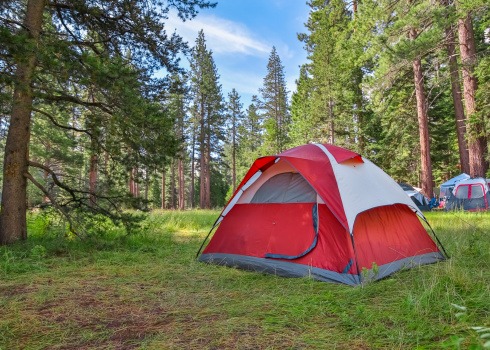Camping can be a bonding activity that leaves you with great memories to last a lifetime; a portable tent is an important component of any backpacking setup.
There are many aspects to consider when choosing, and the more you know about what’s available, the quicker it will locate the perfect fit for you.
When shopping for tents, it’s essential to remember that there are no standard measurements. It’s a great idea to start with size. The best camp for families provides plenty of room for your body as well as the clothing and supplies you’ll need to keep inside.
Backpacker: Different Types of Portable Shelter
Various tents come in a range of sizes and setup types, each with its own set of advantages and disadvantages.
For example, you’ll have to choose between freestanding, semi-freestanding, and tarp tent, in addition to capacity. Here’s a quick rundown:
- Freestanding– It can be adjusted to its maximum capacity. They usually feature a dome form and a strong pole system. This type of tent is wide and ideal for camping in challenging terrain where staking is a challenge.
The pole system produces enough tension to keep the fly and fabric body stable, and it’s the most adaptable style. - Semi-freestanding– These have their pole setup and can stand independently without being staked, but they will need to be staked for complete strength and living space.
These components comprise a body, a rainfly and stakes, all of which must be staked out for a proper operation. As a result, Semi-freestanding furniture offers the best of both worlds in terms of weight savings, space, and versatility.
- Portable Tarp Tent: A Tarp tent is not self-supporting and requires the use of trekking poles and pegs for support. They’re normally single-wall, which might lead to condensation build-up.
A Tarp tent isn’t the ideal choice for inexperienced travellers unless they’re going ultralight, as they’re difficult to set up and require strategic anchoring for maximum usable area and stability.
These shelters are perfect for fast-and-light backcountry travel after you’ve figured out the rest of your system and want to lighten up.
Factors Before Buying
Here are a few insights to keep in mind as you narrow down your list.
- Space Matters– The bigger the tent, the more space you’ll have to sit up, move about, change, and pack up in the morning.
The one clear downside of picking a larger shelter is that you’ll have to carry more weight. Backpacking tarps are typically designed to fit a 20-inch width per person with a modest bit of extra floor space.
If your sleeping pad is thicker or you need more space, consider scaling up. Look for a canopy with a horizontal spreader bar built into the pole system, as this will give you significantly additional headroom. - Convenience– Most hikers desire a shelter that puts up quickly and painlessly—a quick campground setup means you can eat sooner after a hard day on the trail.
The most portable tent should take a few minutes to set up after understanding how the camp structure, rainfly, and pegs work together. - Protection– Make sure your tent has a rainfly and that it is factory-sealed, so you won’t have to bother about waterproofing it yourself.
To assist anti-moisture, choose a rainfly that can be secured taut against the walls. This is the tent’s most water-resistant and long-lasting element.
Choosing a tent is quite simple if you stick to the basics. With safety as the top priority, camping just became fun for the whole family again.
